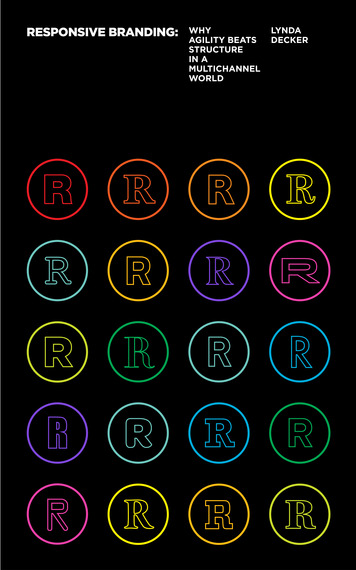This post is an excerpt from Lynda Decker's book of the same title.
As an experienced marketer I often hear the latest branding maxims. Honestly, if your career is as long as mine, a great deal of the dogma is repetitive, and the advice is simplistic. It is tiresome.
Yet some brands break through and create tremendous buzz. I decided to interview a number of leading marketers over the past year to ask why and see where branding is headed. My research uncovered some common themes among the most successful ones.
As a result, I conceived the term Responsive Branding to reflect a new approach--one that is agile and adaptable to a changing marketplace. Responsive Branding is a framework of consistent voice, persona, values, look and feel that allows for a high level of customization and success. But mind you--it's a framework not a system.
Successful brands break the rules that have long been the foundational elements of traditional brand building, such as mindless repetition. Success now requires conceptual themes that are bigger and broader than those found in a design manual. It requires concepts that touch cultural flashpoints, finding common ground between the brand and our emotions.
Branding in the 21st-century is loaded with paradoxes. Yes, you need consistency, expertise, focus and risk. But you need to use those qualities in different ways than marketers have in the past. First and foremost it never stops evolving.
Consistency has been the cornerstone of corporate brand building since its principles originated with the emergence of the 20th-century supermarket. Major consumer companies such as Campbell's, Procter & Gamble and Del Monte systematized package design to make their products stand out on shelves, to help shoppers recognize their brand and to cultivate loyalty. A grocery shelf full of those Campbell's red-and-white cans is visually powerful.
Once branding entered the boardrooms of the service industry, it really emphasized programmatic consistency that facilitated production. It enabled consistency of communication with less supervision--especially for decentralized organizations full of time-pressed marketing managers.
Yet, more and more companies find they are struggling to break through in this hyper-media environment--and the old constructs no longer work. Earlier this year NPR ran a story about advertising and the lead-up to Super Bowl 50. Everyone wanted an "Oreo moment." In case you're unfamiliar with the reference, there was a power outage in 2013 at the Superdome in New Orleans during the Big Game's third quarter. During the 30-minute blackout, Oreo's ad group, the Martin Agency, sent out a tweet of an image of the cookie enveloped in darkness with the caption, "Power out? No problem. You can still dunk in the dark." It was re-tweeted more than 15,000 times.
There are many other examples we experience every day. With over 700 million iPhones sold to date, the majority of us reading this article are familiar with Apple. Most people I asked assumed Apple's brand program lacks flexibility. There is, however, a big difference in rigidly protecting a brand and rigidly deploying a brand across all communication platforms.
Go, for example, to Apple's consumer website. It's consistent from page to page with a white, clean look and its product as hero. Then, click on Apple for Business--the tone changes. The pages show photos of teams working with products. Implicit is the message that Apple will facilitate collaboration. Now, go to Apple Music--it's edgier and moodier--reminiscent of songs playing inside your head.
Everything Apple communicates is audience focused and contextual to the delivery channel. The strategy is just one of the many reasons Apple is one of the most powerful brands in the market.
One could say that Responsive Branding is a throwback to the era of Mad Men and the dominance of the creative agency. In some ways, the observation is correct--but it's overly simplistic. Responsive Branding requires Mad Men-era creativity and ingenuity, but it also requires intense attention and coordination. It's not easy because it never stops evolving.
Responsive Branding offers marketers an approach that embraces creativity, leverages media fragmentation and eschews uniformity. It aims for a coherent framework of cross-platform visual and verbal communication.
That's more powerful than a shelf of red-and-white soup cans.
